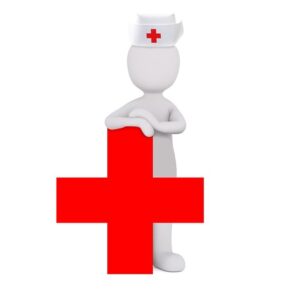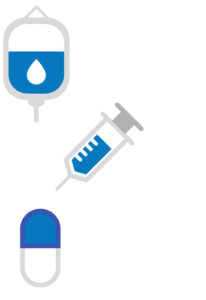3 Big Issues in Patient Safety and 3 Innovative Solutions

Recent times have seen many advancements in the healthcare field, yet there are still issues of patient safety. Some challenges for hospitals are ongoing. Others result from challenges that the ever-changing healthcare market presents.
The following are three ongoing problems and three solutions that will overcome these challenges.
1) EHRs and Broken Communication
 One of the challenges for hospitals is integrating Electronic Health Records that work effectively with their network. The main problem is blurred communication channels between physicians and medical staff. This affects the quality of care and the efficiency of delivery. On occasion, physicians prescribe the wrong medication. Hospitals with incompatible EHRs also find it difficult to share information. A study by Black Book found that 36% of medical record administrators related EHR interoperability issues when exchanging health records with other providers.
One of the challenges for hospitals is integrating Electronic Health Records that work effectively with their network. The main problem is blurred communication channels between physicians and medical staff. This affects the quality of care and the efficiency of delivery. On occasion, physicians prescribe the wrong medication. Hospitals with incompatible EHRs also find it difficult to share information. A study by Black Book found that 36% of medical record administrators related EHR interoperability issues when exchanging health records with other providers.
CMS is changing their requirements for EHRs. In 2019 CMS will make it mandatory for providers to use 2015 edition certified EHR technology (CEHRT). They will need to demonstrate meaningful use to qualify for federal incentive payments. This technology uses application programming interfaces (APIS) with the potential to increase the fluency of information exchanged between hospitals and patients. Under these new conditions, providers will be incentivized to ensure their patients can gain access to their own medical records electronically. New EHR technology is integrating AI innovations to increase interoperability of EHR devices.
2) Nurse-Patient Ratios
 When not enough staff are available on the floor, this greatly hampers patient outcomes. Research shows patients are more likely to get infections, have a higher chance of injury, or get discharged ahead of time which means that patients return sicker to hospitals than they left. When nurses have fewer patients, they are better equipped to meet their needs. They are also more likely to provide a suitable education for their patients on how best to manage their illness or injury. Nurses are also likely to have more time to identify medical errors and find a way to resolve them.
When not enough staff are available on the floor, this greatly hampers patient outcomes. Research shows patients are more likely to get infections, have a higher chance of injury, or get discharged ahead of time which means that patients return sicker to hospitals than they left. When nurses have fewer patients, they are better equipped to meet their needs. They are also more likely to provide a suitable education for their patients on how best to manage their illness or injury. Nurses are also likely to have more time to identify medical errors and find a way to resolve them.
In May, the Nursing Staffing Standards for Hospital Patient Safety and Quality Act was reintroduced by Rep. Jan Schakowsky et al. The bill sets minimum nurse-to-patient ratio requirements for direct-care nurses. It also requires research of staffing needs for direct-care licensed practice nurses and offers ‘whistleblower protections’. A few states have also picked up the baton to reduce staffing ratios in their hospitals.
Union Hospital in Elkton, Maryland has used a similar innovation called the Spok Care Connect. This solution was able to set up-to-date, web-based scheduling information available to any member of staff at the hospital. By implementing this technology they reduced miscommunication and improved patient safety throughout the facility. They also built a supportive environment through daily huddles. These daily huddles helped to identify 24 patient safety incidents where outdated information caused a breakdown in patient care.
3) Supply Chain Running Low
 Problems with the supply chain were a major stumbling block for healthcare provision last year. This trend is expected to continue through 2018. Due to nationwide shortages of sodium bicarbonate solutions hospitals were given no choice but to delay major operations and chemo treatments. Prominent hospitals had to suspend several cardiovascular surgeries after they ran out of essential supplies.
Problems with the supply chain were a major stumbling block for healthcare provision last year. This trend is expected to continue through 2018. Due to nationwide shortages of sodium bicarbonate solutions hospitals were given no choice but to delay major operations and chemo treatments. Prominent hospitals had to suspend several cardiovascular surgeries after they ran out of essential supplies.
In the middle of a national shortage of intravenous IV fluid used to treat adults with mild dehydration, a group of physicians from Bingham Women’s Hospital in Boston, MA; found a solution with huge potential. In place of intravenous IV fluid, physicians used oral rehydration. They first used this solution in the emergency department with success and it wasn’t long before it was used in other departments. Stephanie Kayden, MD, MPH, Chief of the Division of International Emergency Medicine and Humanitarian Programs said “This has become part of our standard practice in the hospital, and I hope it will stay that way. In many ways, the oral rehydration is a better solution for patient care.”
The Take Away
This month is all about creating an awareness of the crucially important issue of patient safety. Some problems such as miscommunication and supply chain shortages may always be issues that hospitals have to overcome on an annual basis. However these problems can be resolved through both adopting innovative solutions and creative thinking.
By: Jonathan Gordon
